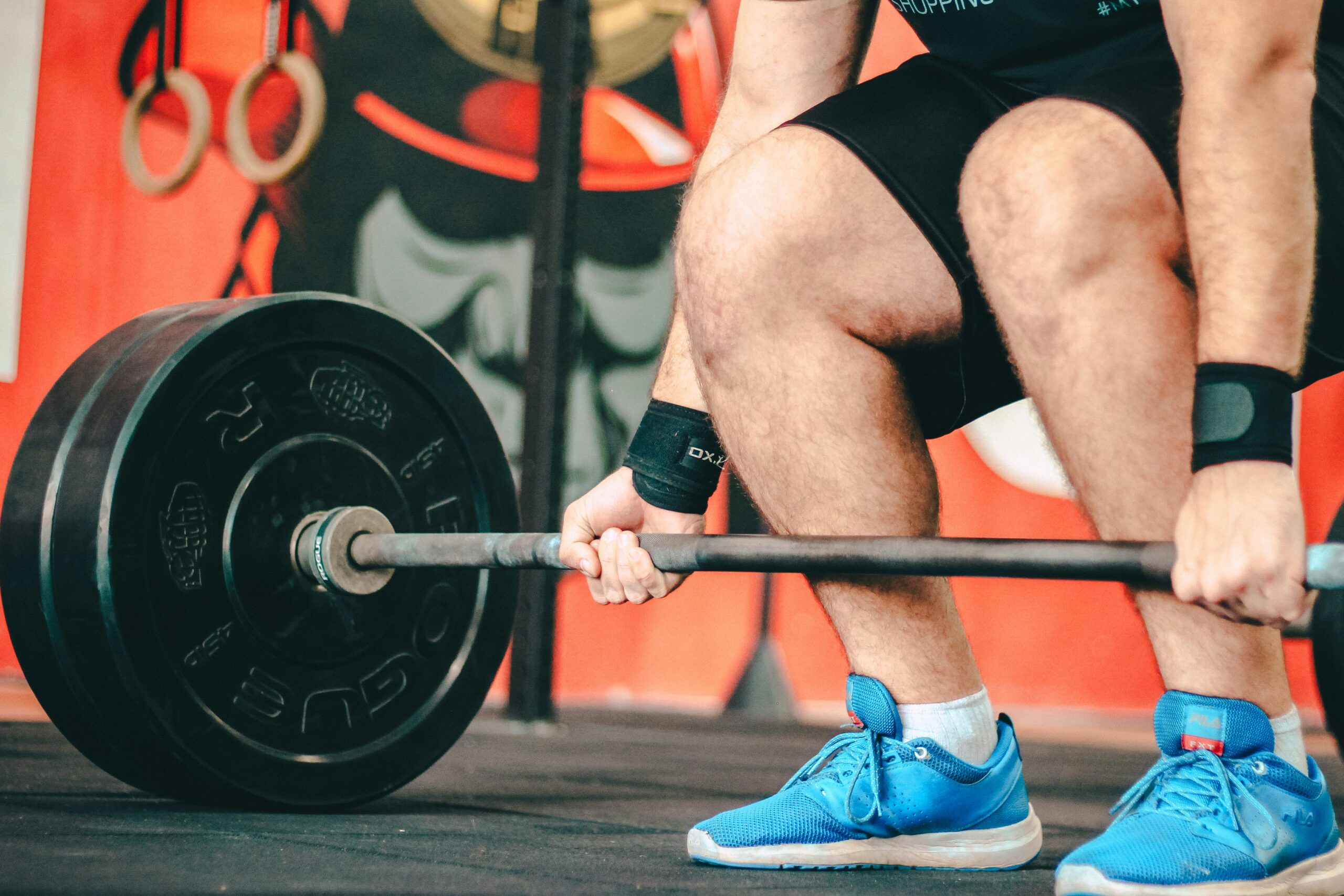Deadlifts are one of the most effective exercises for building full-body strength in teenage athletes. When performed correctly, they develop power through the entire posterior chain—the muscles along your back side that are crucial for athletic performance.
For teens, deadlifts offer unique benefits including improved posture, stronger core muscles, and better movement patterns that carry over to sports and daily activities. However, the key to getting these benefits is proper technique and appropriate coaching.
This guide provides coaches and parents with step-by-step instructions for teaching deadlift technique, common mistakes to watch for, and safety guidelines specifically designed for teenage athletes. With the right approach, deadlifts can become a cornerstone exercise that builds strength safely and effectively.
The Importance of Deadlifts for Teen Athletic Development
Full-Body Strength Development
Deadlifts work more muscles simultaneously than almost any other exercise. They strengthen the glutes, hamstrings, lower back, upper back, and core all at once. This makes them incredibly efficient for teenage athletes who need to build strength but have limited training time.
For athletes, the movement pattern primes the lower body for actions like jumping, throwing, and changing direction. When teens get stronger at deadlifting, they often see improvements in their sports performance because the strength transfers so well to other movements.
For growing athletes, deadlifts help build balanced strength throughout the body rather than focusing on just one muscle group. This balanced approach supports healthy development and reduces the risk of muscle imbalances that can lead to injuries.
Posture and Core Stability
Many teenagers spend hours each day sitting in classrooms or hunched over devices, which can lead to poor posture and weak posterior chain muscles. Deadlifts directly counteract these problems by strengthening the muscles that pull the shoulders back and support proper spine alignment.
The exercise also builds incredible core strength. Deadlifts require the entire midsection to work together to stabilize the spine under load. This creates functional core strength that helps with everything from sports performance to injury prevention.
Strong glutes and hamstrings from deadlifting also support healthy hip function, which is crucial for teens who are still growing and developing their movement patterns.
Step-by-Step Guide to Proper Deadlift Technique
Starting Position Setup
Begin with feet hip-width apart, standing about an inch away from the barbell. As you step up, the bar should be over the middle of your feet, with your shins close the barbell. Toes should point straight ahead or slightly outward, whatever feels most natural.
Hinge at the hips by pushing your hips back and bending your knees slightly. Reach down and grip the bar with hands just outside your legs. You can use an overhand grip with both hands or a mixed grip with one hand over and one under the bar.
Before lifting, ensure your chest is up, shoulders are back, and your spine is in a neutral position. Arms should be straight, and core should be engaged. Think about creating tension throughout your entire body before initiating the lift.
The Lift Execution
Start the movement by driving your feet into the floor and pushing your hips forward. The bar should stay close to your body throughout the entire movement—it should almost drag up your legs as you stand up.
Keep your chest up, spine flat, arms straight, and shoulders back through the lift. Your hips and shoulders should rise at the same rate. Don’t let your hips shoot up first, which would cause your torso to fold forward and put stress on your lower back.
As you reach the top, stand tall with your shoulders back but avoid overarching your back or thrusting your hips too far forward. The finish position should look like normal standing posture, just holding a weight.
Controlled Lowering
The descent is just as important as the lift up. Push your hips back first, then bend your knees as the bar passes them. Keep the bar close to your body and maintain the same back position you had during the lift.
Lower the weight under control—don’t just drop it. The eccentric portion of the lift provides valuable strength benefits and helps you maintain proper form. Touch the plates to the ground softly before setting up for the next rep.
Reset your position between each rep rather than doing touch-and-go reps. This ensures you maintain proper form and gives you a moment to check your setup before each lift.
Common Mistakes to Watch For
Back Rounding Issues
The most dangerous mistake is allowing the back to round during the lift. This puts tremendous stress on the spine and can lead to serious injury. Watch for both lower back rounding and upper back/shoulder rounding.
Cue athletes to “chest up” and “proud chest” to maintain proper spine position. If they can’t maintain a flat back with the current weight, reduce the load immediately. Perfect form is always more important than heavy weight.
Some rounding in the upper back is acceptable for advanced lifters, but beginners should focus on keeping the entire spine neutral throughout the movement.
Lifting With Arms Instead of Hips
Many beginners try to pull the weight up with their arms and back instead of driving with their legs and hips. This creates a rowing motion rather than a proper deadlift and significantly increases injury risk.
Teach athletes to think about pushing the floor away with their feet rather than pulling the bar up. The arms should remain straight throughout the movement, acting only as hooks to hold the weight.
Emphasize that the power comes from the hips and legs. The back muscles work to maintain position, not to lift the weight.
Poor Foot Position and Balance
Feet too wide or too narrow both create problems with balance and power generation. The bar should travel in a straight line over the middle of the feet throughout the entire movement.
Watch for athletes shifting their weight to their toes during the lift. All the power should come from pushing through the heels and mid-foot. If they’re on their toes, they’re likely trying to use their back too much.
Proper foot position also means the bar starts over the middle of the foot, not touching the shins. Many beginners start with the bar too far forward, which makes the lift much harder and less safe.
Hyperextension at the Top
Some athletes finish the lift by leaning back too far or thrusting their hips forward excessively. This puts unnecessary stress on the lower back and doesn’t add any strength benefits.
The top position should simply be normal standing posture while holding the weight. Shoulders back, chest up, hips under the shoulders. No dramatic leaning or thrusting movements.
Safety Tips, Progression, and Injury Prevention for Teens
- Proper Warm-Up Protocol: Always begin with 10-15 minutes of general warm-up. Follow with specific warm-up sets and gradually adding weight. Never attempt working sets without proper warm-up.
- Qualified Supervision is Essential: Teenage athletes should never attempt a deadlift for the first time without knowledgeable supervision. A qualified coach or trainer can spot form problems immediately and make corrections before they become habits. Group classes should have low coach-to-athlete ratios for proper oversight.
- Progressive Loading: Increase weight gradually according to your program. Only add weight plates when form is consistently perfect with lighter loads. Focus on adding reps before adding weight. A typical progression might be 3 sets of 5 reps, then 3 sets of 8 reps, then add weight and return to 5 reps.
- Adequate Recovery Between Sessions: Deadlifts are demanding on the muscles. Teen athletes should have at least 48-72 hours between heavy deadlift sessions. Two deadlift sessions per week is plenty for most young athletes, with one lighter technique session and one heavier strength session.
- Listen to Your Body: Pain is never normal during lifting. Muscle fatigue and mild soreness afterward is expected, but sharp pains, shooting sensations, or persistent discomfort signals a problem.
Conclusion
Mastering the deadlift with proper technique helps teens build strength that translates into better athletic performance and injury prevention. When coaches emphasize correct form, gradual progression, and listen to athletes’ feedback, deadlifts become a safe and effective part of any training plan. For young lifters, having the right guidance can make all the difference between steady progress and setbacks.
Remember that every athlete develops at their own pace. Some teens will master the movement quickly while others need more time and practice. Consistent coaching, appropriate progressions, and a focus on long-term development will help all athletes benefit from this powerful exercise.
That’s where Athletes Untapped comes in—connecting youth athletes with knowledgeable coaches who tailor strength programs to each individual. Whether it’s perfecting your deadlift or building a full-body routine, personalized coaching ensures you’re lifting smart, staying safe, and pushing toward your best performance every day.




